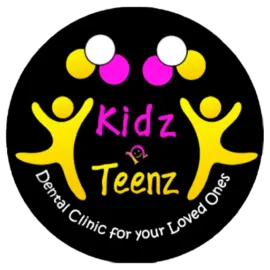Orthodontic services play a crucial role in ensuring proper dental alignment and overall oral health, especially with the growing demand for Orthodontic Services in Chennai. Early intervention can prevent complex dental issues and improve self-confidence in children and teenagers. Orthodontic Services, such as braces, clear aligners, and myofunctional therapy, help in correcting bite problems, overcrowding, and jaw misalignment. According to studies, nearly 75% of children and teens require some form of Orthodontic Services to enhance their dental structure and function.
Pediatric Orthodontic promotes not only a beautiful smile but also long-term dental health by reducing the risk of cavities, gum disease, and speech difficulties. Early diagnosis and timely intervention contribute to improved self-esteem and overall well-being, making orthodontics an essential aspect of pediatric and adolescent dental care with the support of Orthodontic Services in Chennai.
Early Orthodontic Evaluation
An early orthodontic evaluation is a preventive measure designed to identify potential dental issues before they become severe. The American Association of Orthodontists recommends the first check-up by age seven, as this is when permanent teeth begin to emerge.
- Early evaluation helps in detecting bite-related issues such as overbite, underbite, and kids early crossbite before they become more complicated and require extensive treatment.
- It allows orthodontists to identify jaw growth abnormalities that may need early intervention to ensure proper development and prevent asymmetry in the facial structure.
- Timely assessment helps in planning the best course of treatment to prevent future complications, minimizing the risk of extractions or surgeries later in life.
By assessing the child’s oral development at an early stage, orthodontists can recommend treatments that guide the proper growth of the jaw and teeth. This proactive approach minimizes the need for invasive procedures in the future and ensures optimal dental health.

Interceptive Orthodontics
Interceptive orthodontics involves treatments that correct dental issues while a child’s jaw is still growing. This approach reduces the severity of Orthodontic Services and prevents the need for extensive treatment later.
- This method helps guide the proper eruption of permanent teeth by creating enough space, reducing the risk of crowding and misalignment as the child grows.
- It corrects harmful oral habits such as thumb-sucking, tongue thrusting, and prolonged pacifier use, which may lead to severe misalignment and jaw irregularities over time.
- Interceptive orthodontics can significantly reduce the risk of tooth extractions and complex jaw surgeries by addressing issues at an early stage, ensuring proper growth and alignment.
By using appliances such as space maintainers, palatal expanders, and functional appliances, interceptive orthodontics ensures a balanced and well-aligned dental structure. This method enhances not only aesthetics but also chewing efficiency and speech development.
Braces & Clear Aligners
Braces and clear aligners are widely used to correct misaligned teeth and improve bite functionality. Traditional braces use metal brackets and wires to gradually shift teeth, while clear aligners provide a discreet and comfortable alternative.
- Traditional braces are highly effective for correcting severe misalignment and bite problems by gradually shifting teeth into their correct positions with precision.
- Clear aligners offer a nearly invisible and removable option for teens, making it easier to maintain oral hygiene and ensuring a more aesthetic appeal during treatment.
- Both braces and aligners contribute to better long-term oral health by improving bite function, reducing the risk of gum disease, and preventing orthodontic services excessive wear on teeth due to misalignment.
With advancements in technology, modern braces and aligners are more comfortable and efficient than ever. Braces Treatment duration varies based on individual needs, but early intervention and consistent follow-ups ensure optimal results for a confident and healthy smile.
Myofunctional Therapy Integration
Myofunctional therapy is an innovative approach that complements Orthodontic Services by addressing improper oral habits and muscle function. This therapy focuses on tongue posture, swallowing patterns, and breathing techniques to support proper jaw and teeth alignment.
- Myofunctional therapy helps in correcting oral habits such as chronic mouth breathing, which can lead to improper jaw development and misaligned teeth over time.
- Strengthening the facial and oral muscles through targeted exercises ensures better support for Orthodontic Services, leading to more stable and long-lasting results.
- This therapy also improves speech cavity prevention for toddlers and overall oral function by training the tongue and surrounding muscles to work in harmony, preventing issues like lisps and articulation problems.
Integrating myofunctional therapy with orthodontic care enhances treatment outcomes and promotes long-lasting results. By developing healthy oral habits early, children and teenagers experience improved facial development, breathing, and overall dental wellness.
Conclusion
Orthodontic services are essential in shaping healthy smiles and ensuring long-term dental well-being, particularly with the availability of Orthodontic Services in Chennai. From early evaluations to advanced treatments like braces, clear aligners, and myofunctional therapy, a comprehensive approach to preventive care prevents future complications and enhances confidence in young individuals.
Investing in orthodontic care not only improves aesthetics but also promotes better oral hygiene, speech, and overall health. With personalized treatment plans tailored to each child’s needs, achieving a perfect smile is both achievable and beneficial for lifelong dental wellness through Orthodontic Services in Chennai.





